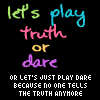Sex education is a broad term used to describe education about human sexual anatomy, sexual reproduction, sexual intercourse, and other aspects of human sexual behavior. Common avenues for sex education are parents or caregivers, school programs, and public health campaigns.
[edit] Morality of sex education
One approach to sex education is to view it as necessary to reduce risk behaviours such as unprotected sex, and equip individuals to make informed decisions about their personal sexual activity. Additionally, some proponents of comprehensive sex education contend that education about homosexuality encourages tolerance and understanding that homosexuality isn't something that is wrong.
Another viewpoint on sex education, historically inspired by sexologists like Wilhelm Reich and psychologists like Sigmund Freud and James W. Prescott, holds that what is at stake in sex education is control over the body and liberation from social control. Proponents of this view tend to see the political question as whether society or the individual should teach sexual mores. Sexual education may thus be seen as providing individuals with the knowledge necessary to liberate themselves from socially organized sexual oppression and to make up their own minds. In addition, sexual oppression may be viewed as socially harmful.
To another group in the sex education debate, the question is whether the state or the family should teach sexual mores. They believe that sexual mores should be left to the family, and sex-education represents state interference. They claim that some sex education curricula break down pre-existing notions of modesty and encourage acceptance of practices that those advocating this viewpoint deem immoral, such as homosexuality and premarital sex. They cite web sites such as that of the Coalition for Positive Sexuality as examples. Naturally, those that believe that homosexuality and premarital sex are a normal part of the range of human sexuality disagree with them.
Many religions teach that sexual behavior outside of marriage is immoral, so their adherents feel that this morality should be taught as part of sex education. Other religious conservatives believe that sexual knowledge is unavoidable, hence their preference for a curricula based on abstinence
Lesbian, gay, bisexual, and transgender youth
Youth seeking his father's advice on love
From the Haft Awrang of Jami, in the story A Father Advises his Son About Love. His counsel is to choose that lover who desires him for his inner beauty. See Sufi outlook on male love Freer and Sackler Galleries, Smithsonian Institution, Washington, DC.Lesbian, gay, bisexual, and transgender (LGBT) youth are often ignored in sex education classes, including a frequent lack of discussion about safer sex practices for manual, oral, and anal sex, despite these activities' different risk levels for sexually transmitted diseases.
Some people do not agree with comprehensive sexual education that references or discusses such practices, believing that including this additional information might be seen as 'encouraging homosexual behavior'. Proponents of such comprehensive curricula hold that by excluding discussion of these issues or the issues of homosexuality, bisexuality, or transgenderedness, feelings of isolation, loneliness, guilt and shame as well as depression are made much worse for students who belong or believe they may belong to one of these categories, or are unsure of their sexual identity. Supporters of including LGBT issues as an integral part of comprehensive sexuality education argue that this information is still useful and relevant and reduces the likelihood of suicide, sexually transmitted disease, 'acting out' and maladaptive behavior in these students. In the absence of such discussion, these youths are said to be de facto forced to remain in the closet, while youths are left without guidance on dealing with their own possible same-gender attractions and with their LGB and Transgender classmates.
Supporters of comprehensive sex education programs argue that abstinence-only curricula (that advocate that youth should abstain from sex until marriage) ignore and marginalize lesbian, gay, bisexual, and transgender youth, who are often unable to marry a partner due to legal restrictions. Proponents of abstinence-only education often have a more conservative view of homosexuality and bisexuality and are against them being taught as normal, acceptable orientations, or placed in equal footing to heterosexual acts/relations, and so they generally do not see this as a problem.
Scientific study of sex education
The debate over teenage pregnancy and STDs has spurred some research into the effectiveness of different approaches to sex education. In a meta-analysis, DiCenso et al. have compared comprehensive sex education programs with abstinence-only programs.[26] Their review of several studies shows that abstinence-only programs did not reduce the likelihood of pregnancy of women who participated in the programs, but rather increased it. Four abstinence programs and one school program were associated with a pooled increase of 54% in the partners of men and 46% in women (confidence interval 95% 0.95 to 2.25 and 0.98 to 2.26 respectively). The researchers conclude:
"There is some evidence that prevention programs may need to begin much earlier than they do. In a recent systematic review of eight trials of day care for disadvantaged children under 5 years of age, long term follow up showed lower pregnancy rates among adolescents. We need to investigate the social determinants of unintended pregnancy in adolescents through large longitudinal studies beginning early in life and use the results of the multivariate analyses to guide the design of prevention interventions. We should carefully examine countries with low pregnancy rates among adolescents. For example, the Netherlands has one of the lowest rates in the world (8.1 per 1000 young women aged 15 to 19 years), and Ketting & Visser have published an analysis of associated factors.[27] In contrast, the rates are:
93.0 per 1000 in the United States (85.8/1000 in 1996)
62.6 per 1000 in England and Wales, and
42.7 per 1000 in Canada
15.1 per 1000 in Belgium (1996)[28]
We should examine effective programs designed to prevent other high risk behaviors in adolescents. For example, Botvin et al. found that school based programs to prevent drug abuse during junior high school (ages 12–14 years) resulted in important and durable reductions in use of tobacco, alcohol, and cannabis if they taught a combination of social resistance skills and general life skills, were properly implemented, and included at least two years of booster sessions.
Few sexual health interventions are designed with input from adolescents. Adolescents have suggested that sex education should be more positive with less emphasis on anatomy and scare tactics; it should focus on negotiation skills in sexual relationships and communication; and details of sexual health clinics should be advertised in areas that adolescents frequent (for example, school toilets, shopping centres)."[26]
Also, in answer to the criticism of conservatives, a US review, "Emerging Answers", by the National Campaign To Prevent Teenage Pregnancy examined 250 studies of sex education programs.[29] The conclusion of this review was that "the overwhelming weight of evidence shows that sex education that discusses contraception does not increase sexual activity".
Friday, June 15, 2007
Sex education
Subscribe to:
Post Comments (Atom)






0 comments:
Post a Comment